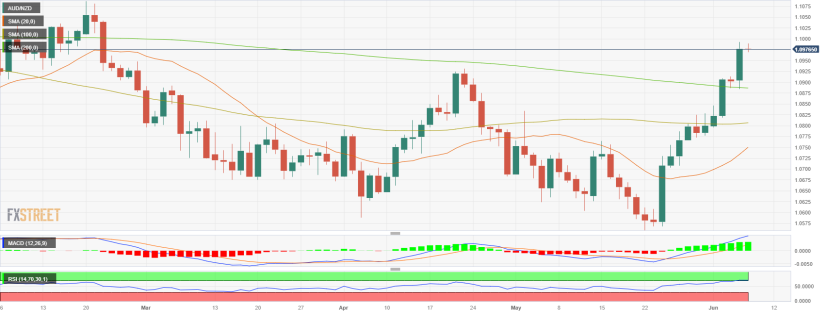
- The NZD/AUD pair sets a fifth consecutive day of gains and stands in the overbought area.
- RBA surprised the markets by announcing a 25 bps hike to the 4.10% level.
- Australian bond yields give traction to the Australian Dollar.
The NZD/AUD gained more than 60 pips closing at 1.0975 on Tuesday following the Reserve Bank of Australia (RBA) decision which exceeded economist expectations. In that sense, the main reason for the Aussie’s upward trend is the rise in Australian bond yields. For Wednesday’s session, eyes will be on RBA Governor Lowe’s speech and Q1 GDP data from Australia.
A hawkish stance from the RBA gives the Aussie traction
Following a pause in April’s meeting, the Reserve Bank of Australia (RBA) has recently announced consecutive unexpected moves towards a more hawkish stance with a 25 basis point (bps) hike. According to the bank, this decision comes in light of the persistently tight labour market conditions and elevated levels of inflationary pressures and hinted that ongoing rate hikes might be necessary.
As a reaction, the 2-year Australian bond yield surged to its highest level since 2012, giving further traction to the Aussie.
On the Kiwi’s hand, investors will eye Chinese economic data on Wednesday. As China is one of the main trading partners of New Zealand, the outcome of the data may have a further impact on the NZD price dynamics.
Levels to watch
According to the daily chart, the AUD/NZD holds a bullish outlook for the short term as the Relative Strength Index (RSI) and Moving Average Convergence Divergence (MACD) suggest that the buyers are in control while the pair trades above its the 20,100 and 200-day Simple Moving Averages (SMA). However, the RSI standing in overbought conditions, suggest that the pair is poised for a downward technical correction.
On the downside, immediate support for AUD/NZD is seen at the 1.0939 level, followed by the 1.0900 zone and the 200-day SMA at 1.0882. On the upside, the resistances lineup at the daily high at 1.0992 followed by the 1.1020 area and the 1.1050 zone.
